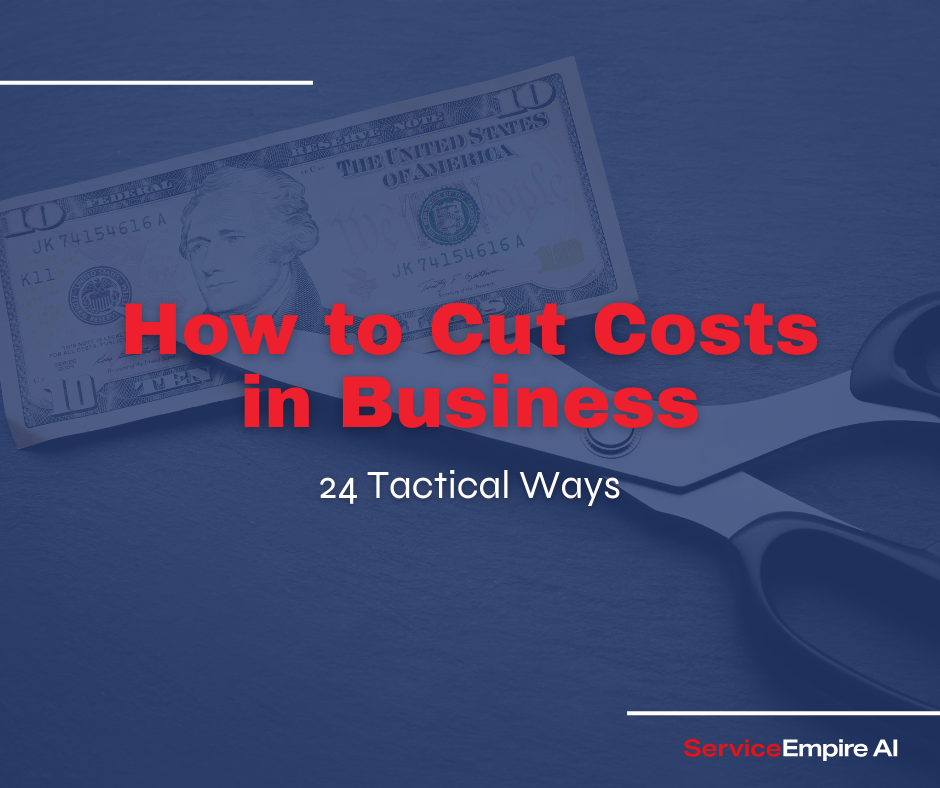
Want to boost your bottom line without cutting corners? Here's how top field service companies reduce operating costs while maintaining or even improving their service quality.
Start With Smart Expense Analysis
You need to understand where your money really goes. Break down your operational expenses into three major categories: vehicle operations, equipment and tools, and supply management. Track every expense for a month – you'll likely find surprising costs you didn't realize were eating into your profits.
Look for patterns in your spending. Which jobs cost more than they should? Where are you wasting supplies or burning through equipment faster than expected? Understanding these patterns helps you target the right areas for reduction without impacting service quality.
Don't guess at your biggest cost drivers. The data will show you exactly where to focus your efforts.
Vehicle Operations Cost Reductions
Your fleet represents one of your biggest operational expenses. Here are proven ways to cut vehicle costs without compromising service:
- Route optimization software – Reduce fuel costs by 15-25% through smarter scheduling and routing
- Regular maintenance schedules – Prevent costly breakdowns and extend vehicle life by 30%
- Fuel card programs – Track usage and get bulk discounts at preferred stations
- Driver training programs – Improve fuel efficiency through better driving habits
- Vehicle right-sizing – Match vehicle size to actual job requirements, not worst-case scenarios
- Tire pressure monitoring – Properly inflated tires improve fuel economy by 3-4%
- GPS tracking systems – Eliminate unauthorized vehicle use and optimize dispatch decisions
- Consolidated trips – Combine supply runs and service calls in the same geographic area
Equipment and Tools Cost Management
Your tools and equipment can drain your budget if not managed properly. These strategies help you get maximum value:
- Preventive maintenance programs – Regular upkeep costs 60% less than emergency repairs
- Tool tracking systems – Reduce replacement costs from lost or stolen equipment
- Bulk purchasing agreements – Negotiate volume discounts with suppliers for frequently used items
- Equipment sharing protocols – Maximize utilization across teams instead of duplicate purchases
- Quality over quantity approach – Buy durable tools that last longer, even if initial cost is higher
- Rental vs. purchase analysis – Rent specialized equipment used less than 60% of the time
- Trade-in programs – Get credit for old equipment when upgrading to newer models
- Multi-purpose tool selection – Choose tools that can handle multiple job functions
Supply Chain and Inventory Optimization
Poor inventory management kills profitability. Here's how to optimize your supply costs:
- Just-in-time inventory systems – Reduce storage costs and cash flow tied up in excess stock
- Supplier consolidation – Work with fewer suppliers to negotiate better terms and cut fixed costs with vendors
- Usage tracking and forecasting – Prevent overordering by understanding actual consumption patterns
- Waste reduction protocols – Train technicians to minimize material waste on job sites
- Quality supplier relationships – Partner with reliable suppliers who offer competitive pricing and fast delivery
- Seasonal purchasing strategies – Buy supplies during off-peak periods when prices drop
- Return and exchange policies – Negotiate favorable terms for unused or defective materials
- Digital inventory management – Use software to track usage and automate reordering
Implementation Strategy That Works
Start with quick wins that show immediate results. Simple changes like switching to LED lighting in your facility or optimizing your thermostat settings can show savings right away. These early successes build momentum for bigger operational changes.
Roll out changes gradually to ensure quality doesn't suffer. Test cost-reduction ideas with one team or service area first. Monitor customer satisfaction during changes to catch any negative impacts before they spread.
Create clear accountability for cost management. Assign specific team members to monitor each expense category. Give them the authority to make small changes and the responsibility to report results monthly.
Track Your Success
Monitor your savings meticulously. Compare costs before and after changes using the same time periods and job volumes. Look at both direct savings and indirect benefits like improved first time fix rates or reduced callbacks.
Watch quality metrics closely. Track customer satisfaction scores, first-time fix rates, and completion times. Good cost reduction should maintain or improve these metrics, not hurt them.
Calculate your return on investment for each change. Some cost reductions pay for themselves in weeks, while others take months to show results. Focus your efforts on the changes that deliver the biggest impact fastest.
Quality Assurance During Cost Cutting
Invest in training to maintain quality while reducing costs. Well-trained technicians work more efficiently and make fewer costly mistakes. The money spent on training often comes back multiple times in reduced waste and better service outcomes.
Create clear quality checklists and check them regularly. Make sure cost-reduction efforts don't tempt anyone to cut corners on service delivery. Your reputation is worth more than any short-term savings.
Reward teams that find creative ways to save money while maintaining high standards. Recognition and incentives encourage continued innovation in cost management.
The Bottom Line
Remember that smart cost reduction focuses on efficiency and waste elimination, not corner cutting. When done right, reducing operational costs can actually improve your service quality by forcing you to work smarter and more systematically.
The companies that cut costs successfully think of it as operational optimization, not just expense reduction. They use data to make decisions, implement changes methodically, and never lose sight of their service quality standards.





